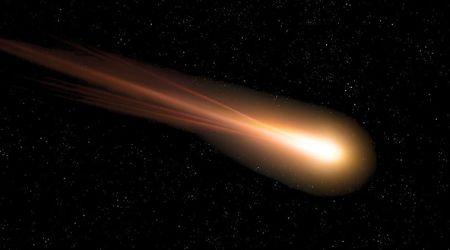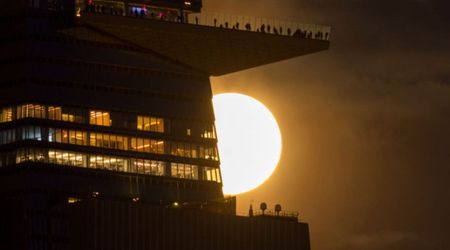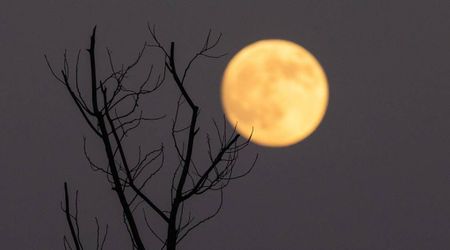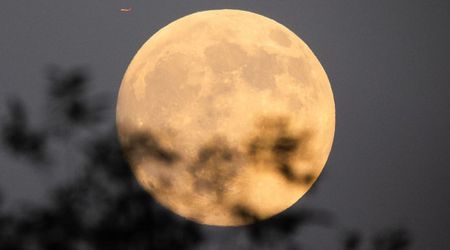Planets through a telescope

Observing the planets of our solar system through a telescope is not as difficult as you may think. Many beginners imagine that astronomy is a complex science that only those with advanced degrees in physics or mathematics can practice. With a little training and patience, it is possible to observe many wonders such as the large cloudy bands of Jupiter, the gigantic rings of Saturn, as well as the Moon.
Choose the planet you would like to observe
Can you see planets with a home telescope?
It is definitely possible to observe the planets with your home telescope. Depending on which celestial body you chose to look at, even the more modest equipment can offer good viewing. The most important thing is to try to observe them without atmospheric turbulence because the planets usually require higher magnification. The slightest turbulence can blur the image and the finer details are no longer perceptible.
Even with the naked eye, it is possible to spot the planets in the night sky. They usually look a little bit different than stars and they do not twinkle as much. Even if you are located in a city with light pollution, you should be able to easily find them.
Our readers frequently ask us if there is one optical instrument that is best suited for planetary observation. Dobsonian telescopes are known to be the best type of telescope for planetary observation because they have a very large aperture and a very long focal length, which is excellent for obtaining the necessary magnification without losing too much brightness and detail.
Observing the inferior planets through a telescope
The inner planets are a little more difficult to observe because they orbit very closely to the sun. From our point of view on Earth, they are never too far away from our home star. They follow it through the Ecliptic (an imaginary line in the sky that marks the annual path of the sun). For this reason, it is much easier to observe those planets during their "greatest elongation", which is the moment where they are the furthest away from the sun.
Bonus Target: The Moon.
The Moon
The Moon is in synchronous rotation with Earth meaning the same side is always facing the Earth.
Find out how you can observe the Moon through a telescope.
Guide Coming soon
- Brightness: -4 (min) / -12 (max)
Mercury
This planet is among the most difficult to observe as it does not deviate much from the Sun and is often low on the horizon. Its greater elongation is only 28°
Check out how you can see Mercury through a telescope.
Guide Coming soon
- Next Favorable Position: May & November 2021
- Brightness: 5.14 (min) / -2.42 (max)
Venus
Depending on the time of the year, Venus can be observed either early morning or early evening. It is the brightest planets due to close it orbits the sun. This planet can actually be observed during the day with a telescope, granted you are being extra prudent that your field of vision does not go too close to the sun. Venus display phases, just like the moon, and many amateur astronomers try to capture an image of every phase that this planet goes through.
Observing Venus through a telescope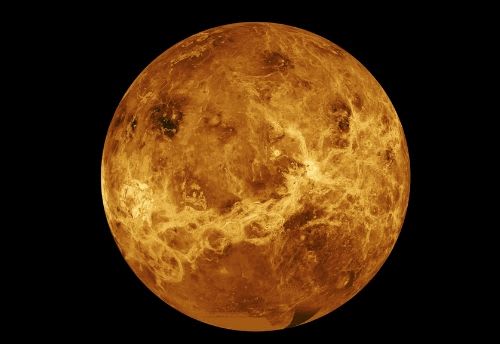
- Next Favorable Position: December 9, 2021
- Brightness: -3.87 (min) / -4.88 (max)
Observing the superior planets through a telescope
The outer planets (particularly Saturn) are often the reason why people fall in love with stargazing and buy their first amateur telescope. The closest outer planets can be seen even in modest optical instruments
MARS
Mars is bright enough to always be visible to the naked eye. It generally looks like a star with a reddish hue, however, it does not twinkle as much as stars can do. Even with a modest telescope, you can make out quite a lot of the planet's surface features. Mars is at its closest position to Earth every two years and for about two months: the ideal moment to take your telescope outside and observe the red planet. With enough practice, you might even be able to see the polar caps!

- Next Favorable Position: January till May 2021
- Brightness: 1.74 (min) / -2.72 (max)
Jupiter
This planet is one of the easiest telescopic targets to observe and does not require an expensive or large optical instrument. Throughout the entire year, Jupiter is usually visible during a big part of the night. Every 13 months, this planet enters a new constellation in the sky, which makes it relatively easy to track for a long period of time. Even in small telescopes, let's say 4-inch aperture, Jupiter will look majestic and you should even be able to make out some of the 4 Galileans moons. With a telescope of 8inch or more, you should comfortably see the great red spot and enjoy the different colours made out by the belts and zones that constitute the planet's surface.
Jupiter through telescope
- Next Favorable Position: August 2021
- Brightness: -1.74 (min) / -2.62 (max)
SATURN
The ringed planet is the most impressive telescopic target to observe and is often the reason why so many people fall in love with stargazing. Saturn is the easiest planet to admire through a telescope. With a long telescope focal length, you can make out so many details, including cloud layers. Depending on your instrument, you might even be able to spot a few Saturnian moons. Titan and Rhea particularly, as they orbit the planet rather rapidly (16 days and 4,5 days respectively.)
Saturn is ideal for anyone beginning in stargazing and owns an entry-level telescope for practice.
SATURN through telescope
- Next Favorable Position: August 2021
- Brightness: 1.46 (min) / -0.92 (max)
uranus
Uranus is far, very far. To see it through a telescope, you need advanced equipment and be under a perfectly black sky. You will also have to know precisely its location and the stars around it, as it can be very easy to confuse the planet with background stars. With binoculars, the problem remains the same. It would be ideal to have a telescope of 80 mm and a magnification of at least 200 times. Even with the best viewing conditions and a decent telescope, you would only be able to make out a faint dot with a blueish hue.
While it's not the most impressive planet to observe through a telescope, we still find it rather amazing that this distant celestial body it can be seen from a backyard.
uranus through telescope
- Next Favorable Position: November 2021
- Brightness: 5.89 (min) / 5.67 (max)
neptune
The gas giant is very far from the Sun and requires a high magnification (200 to 300) to be seen. A large telescope may reveal a very small disc of a bluish colour due to the methane present in the upper atmosphere.
Find out how you can observe Neptune through a telescope.
Guide Coming soon
- Next Favorable Position: September 2021
- Brightness: 7.96 (min) / 7.82 (max)
pluto
The Dwarf planet is extremely far from us. Seeing Pluto requires a telescope with at least 8 inches (200mm) aperture at a minimum. Even then, Pluto will resemble a tiny star. Nonetheless, many amateur astronomers are proud to observe this planet as it is truly a challenging target.
Discover how you can observe Pluto through a telescope.
Guide Coming soon
- Next Favorable Position: July 2021
- Brightness: 14
What do planets look like through a telescope?
It is important to understand that what you will see while looking at the planets through a telescope will be very different from the numerous images you may have seen online. These images are usually digitally processed and enhanced with software.
In reality, you will see live images, often through thick layers of atmosphere that can make the image slightly blurry. Think of it this way: if you were to look at an object through water, the further away the object is, the harder it would be to see it clearly. Now imagine that the water started flowing and move back and forth: observing the object would be even harder. This is the same principle with celestial bodies in the sky, but the water from our example would be the atmosphere. The quality of your viewing will also depend on your optical instrument. A larger telescope offering a higher magnification will always perform better than entry-level telescopes or stargazing binoculars.
Pro-Tip: Before investing in a telescope, we recommend finding an astronomy club near where you live and participate in star parties. You will be able to try different optical instruments and learn more information about them from a fellow amateur astronomer. This will definitely help you make a more informed decision, as some telescope are more specialised for planetary observation and some are better for deep sky object like galaxies. In addition, organizers often use a green laser pointer to teach people how to recognize the planets and their paths in the night sky.
The easiest way to spot the planets in the sky
There are many ways to spot the planets. One of the easiest solutions is to use either use an astronomy mobile app or a free software called “Stellarium”. The latter is a sort of digital planetarium that allows you to simulate the sky in real-time depending on your location, including the planets position, the constellations, as well as some information about the brightest stars.
Once you've set up your location, you can check the position of the stars and planets that you want to observe today or at a future date: you can speed up time or even go back in time to see how the sky looked like a few weeks ago. This software is very handy for anyone wanting to plan their stargazing session in advance!
You can download and learn how to use it here: https://stellarium.org/










